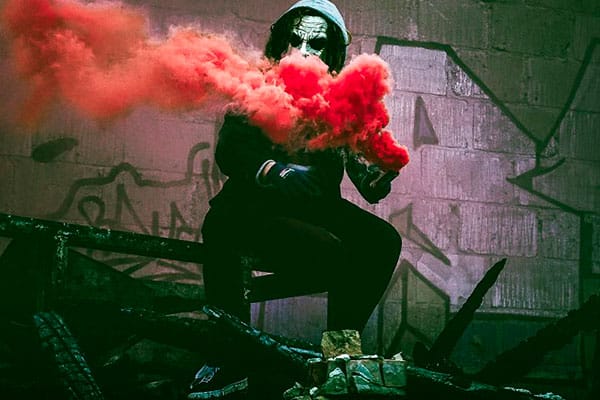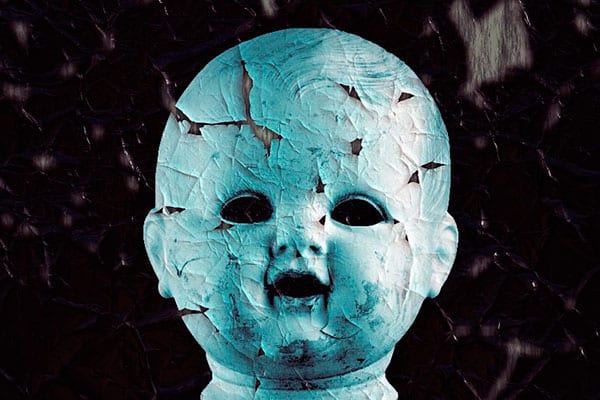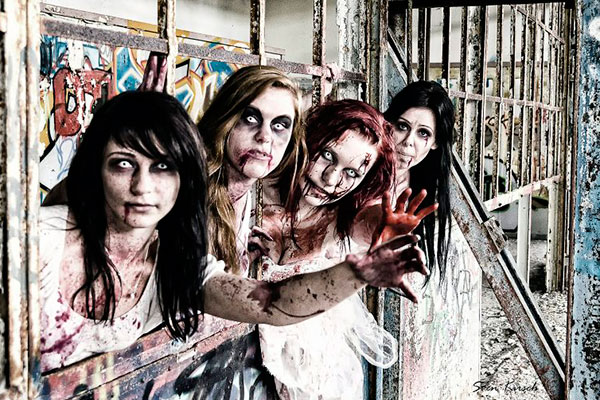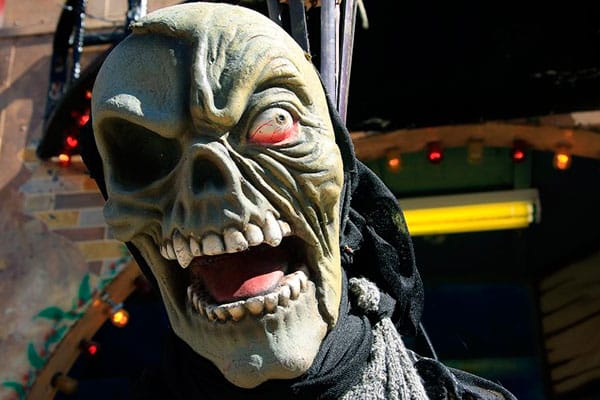Following on the heels of blogs about the first room and the last room, Jonathan and Crystal discuss the best room.
This blog is based on Episode 183 of our Haunt Weekly podcast, which was on the best room of a haunt. I, Jonathan, do most of the talking. Everything in quotes is from my able side-kick and podcast co-host, Crystal.
This podcast was the third part of a trilogy on the first room, the last room, and the best room of your haunt. We’ll be talking about how to create the most memorable room in your haunt. Two blogs ago, we discussed the first room and why it’s crucial. The first room plays an essential role in the haunt, but there’s a tendency to overemphasize it, especially on the haunt-design side. Haunters often believe they have to put all their energy into the first room. Not necessarily. It’s got a core function, and you’ve got to put something good in there, but you don’t necessarily have to throw all your eggs into that basket. We talked about approaches to the first room, ways we’ve seen people handle it, things we’ve done in our first rooms, etc. In the blog after that one, we covered the same ground with the last room—why it’s important, the role it plays, how it affects the crowd and the queue line—basically, the customer—and the various approaches we’ve seen to making that really work and be memorable.
The idea of this trio of podcasts came to me in a dream. That was probably the most helpful dream I ever had. It gave me three podcast ideas.
“Yeah, no kidding.”
It would be nice to have more of those and less of the terrors. Anywho, long story short, we were talking about this idea of rooms before we got to work on the first podcast. We realized that very few of the memorable rooms in haunts that we visited in the New Orleans area or Atlanta or Chicago or St. Louis or other towns were the first or the last rooms. The most memorable rooms were at various other points in the haunt.
“Yeah, exactly, and that’s kind of frustrating.”
It is and it isn’t at the same time. Some of these rooms really fit with the story they were trying to tell, and it made a lot of sense to put that room where it was—at a point where it was easily remembered. This is the thing a lot of haunters need to understand. You probably know every room in your haunt intimately—in every meaning of that word—so it’s helpful if you can try to view your haunt as your guests do.
When we go to other haunts, we take meticulous notes. One of the tricks we do is bring a voice recorder with us—i.e., an iPhone. We don’t actually buy a separate voice recorder. I mean, what are we? Luddites? Maybe we should though. It would be kind of convenient.
“It would.”

It would, actually. OK, we’re buying a voice recorder. See, I can change my views. Anyway, we take a voice recorder or voice recorder app and, while we’re in the parking lot or on the drive to where we’re going after going through an attraction, we talk about what we saw, try to recall everything we can, and put it on the voice recorder. One thing we learned—and this is helpful for anyone who does this—is if you want it transcribed, upload it to YouTube as a private video, and YouTube will transcribe it for you. It’s an automatic transcription. It ain’t going to be perfect, but it will be good enough.
So, record what you saw immediately after exiting a haunt. That’s a random tip, because we know, from experience, if we wait more than 24 hours, we forget more than 90% of the stuff in that haunt. It all blurs together, and that’s how your customers are going to view it. That’s how most people are with a haunt—they don’t remember every single room and every single sequence.
“It’s especially important for us to do that, because we’re usually visiting multiple haunts in a night, and we don’t want them to blur together.”
Blur together, yeah.
“Well, I mean, they’re going to, but we don’t want our notes to do that.”
So, how do you build rooms that really stick in guests’ minds? While you want to give a good overall haunt experience, if you don’t have any high points, you risk the whole experience blending together. The example I’ll give for that is Basement of the Dead in Chicago. It had an amazing queue line.
“Oh, yeah.”
I remember the queue line vividly. It was a good haunt—I don’t remember thinking it was a bad haunt—but it was all on the same keel throughout. Because of that, I remember the feel of the haunt, the look of the haunt, but nothing specific. Is that fair?
“That’s fair.”
So, we’re now going to talk about three approaches to creating a best room.

Approach Number 1: Spectacle
We mentioned this idea in the last-room episode, but most of the times when I’ve seen a spectacle room, it’s not been the last room.
“No, it’s usually the first.”
It’s usually the first or one of the next-to-last rooms. An example that comes to mind is Statesville Prison with the Jack-in-the-Box room and everything stacked up to the ceiling.
“It just changed theme completely.”
Yeah, it just changed theme, and it was a spectacle. We talked previously about how, in its previous location, Evil Intentions had the church sequence where you go outdoors, and there’s this big huge set that comes out of nowhere—it just pops up. Of course, one of my favorite examples of spectacle is Netherworld with the giant-tree room.
“Only because you got got.”
Yeah, I’m not ashamed to admit it. I got got. I’m happy when I get got. It was a great room with a huge tree in the center that created a lot of verticality, so you’re not looking at where the scare is coming from. Most haunts are pretty claustrophobic in nature, and that’s often by design. We make smaller rooms so we can fit more in. We have eight-foot panels, so there are claustrophobic ceilings a lot of the time. We build claustrophobically, but that’s not necessarily bad.
Many times, people forget to look up. Here are two of my favorite details from haunts that have to do with looking up. One was at Statesville. In the men’s prison and the women’s prison, they put things in the ceiling that men or women would use. I thought that was pretty clever. At 13th Gate, when you’re going through the London sequence, you look up and see a starry night. It’s indoors, but it’s a starry night, and I remember the first time I saw that, it was just breathtaking. I loved how simple this was to do. They had a black fabric cloth over the top of it with these little LED lights on it.
“It was pinholes with light above them.”
It was one or the other; I haven’t been up there. Either way, it’s a simple design, but it’s very effective. Even if you don’t look directly at it, it adds to the illusion of being outdoors, even though you’re very much inside a metal warehouse building in Baton Rouge. So, basically, having a lot of space and having a lot going on can create something memorable. You have to fill the space with motion and activity. It’s not good to have it just be empty.
“Right,” Crystal deadpanned.
Having a lot going on may require a number of people to create it, and it may also harm throughput. Many haunt guests are pretty much channeled as they go through, so when you give them this new, open space—or at least the appearance of open space—they may freeze.
“You can use a prop-based layout to guide them where they need to go. It would be difficult, but it’s doable.”
It would be difficult, you’re right. However, one of the reasons I want to do it is because it’s difficult.
“With prop-based layout, you can see everything.”
And hiding the scares and things would be much more difficult. I agree.
“Guests can see everything that’s coming up.”
Approach Number 2: The Plot Payoff
Examples of this for me are Masker Haunted House, the Insanitarium, and the House of Shock. Now, the House of Shock is a really good example of the plot-payoff system. The thing with the House of Shock was they’d do the stage show, have a big whoop-de-doo, Laura would come out with Zach the Preacher, and then they’d start letting guests in. Laura, of course, goes off stage. Well, Zach was in the last room, the sacrifice room.
Set-up and payoff are key concepts of film and storytelling. The idea is pretty simple: You set up something, and you plant an idea or a mystery in people’s heads—like, who is so and so, or who is Japes’ daughter? That was from Masker Haunted House.
“Willow was her name.”
Willow. God, I couldn’t remember the name. That’s such a great name that I should have no trouble remembering it. So, you set up a mystery, you set up a character, you set up a conflict early and carry it through the haunt. In your big reveal room, you pay it off somehow.
One way I’ve seen this done, albeit less effectively, was at Terror on the Coast. Terror on the Coast set up this evil clown character in the marketing material and on their website, but when you actually run into him at the haunt, it’s just a random moment.
“I remember The Mortuary used a stock character in their promotion that I didn’t see anywhere in the haunt, and I felt disappointed.”
If you’re setting up characters and setting up premises in the marketing material, it makes sense to have your hook room as the place where that pays off.
“That’s one of those things we’ve always talked about doing but never had time to—telling our story through small vignettes throughout the summer as we lead up to the haunt,” observed Crystal.
Once again, you don’t necessarily need a scare in this sequence if you’re doing a climax—the reveal. If you’ve built up the tension sufficiently, the reveal is going to be the scare. Like I said, a good example of that is the Masker Haunted House with the Willow character. They have the ritual room, and that’s where she is. There’s not a scare in that room, but you definitely don’t want to hang out there very long.
“Yeah, because you don’t want Willow to get you.”
The payoff is the scare, and it really works. I remember that room very well, with all the dancing girls and all the stuff going on. It was ritual dance. However, judging from the end of Game of Thrones and how well that’s gone, set up and payoff may not be as easy as you think.
“If you’re going to Masker Haunted House, and you visit Masker, let us know what you think of how they did the payoff.”
I hope they’re doing the full show. We were there in season, so I hope they’re able to do the full show with all the stuff. This is a good reason to go to MHC—to do a study of it.
Approach Number 3: Break Expectations and Rules
This is my personal favorite, because I love it when haunts do this to me—break expectations and rules. My favorite examples are Necropolis 13 and 13th Gate.
“One specific scare.”
It was one of my favorite scares of all time.
Basically, with a haunt, you unintentionally have rules and expectations. I’m going to use Necropolis as the easy example here. Necropolis always has zombies. Everywhere you go in that haunt, there are zombies. They’re either behind boo holes or on the sides of grates reaching through and trying to get to you, but they never have direct access to you. The last big scare is when the zombies knock over the grate, and now you’re face to face with them.
“And people run.”
People haul ass, for sure. That scare definitely works. They set up the expectation—I don’t know if they did this on purpose or not, but I’m going to assume they did—that the gates will always hold, and they defy that at the end. It’s beautiful, simple, elegant, and it works.
13th Gate did something similar one year with the claustrophobia tunnels. We went through three or four claustrophobia tunnels. It seemed like a lot.
“It was two long ones, and then it was a half one to get where you’re going with the story.”
You go through two claustrophobia tunnels, and there’s not really anything once you get to the end. You’re thinking, “Oh, these are just transition periods. We’re going down a hallway, and this is to keep us from bolting. I get it. Fine.” So, you go through one, two, and then a third—and you’re in this hellscape room—this beautiful hellscape, where it looks like dead bodies are piled up waist high and you’re wading through them. In one of the half-high claustrophobia tunnels, there are people on top of it trying to reach out to you.
“Your brain had been set up to believe you’d be let out into another open area.”
Yeah, into nothing, basically, a big load of nothing, and then you’re let out into a hellscape scene. Bye!
Our brains are hardwired to pick up patterns. We’re basically semi-intelligent monkeys, and we pick up patterns and run with that. I want to do something like that when we have a bigger space. We don’t yet have the room to pull this one off as easily. One year, we did a closet that ended at a hellscape, because we’d done a closet the year before without much payoff. Even though we changed themes, the next year the closet led into a hellscape.
Here’s my advice. Go through your haunt from the perspective of a customer, and think about the types of things they’re likely to expect. Are they expecting a drop panel at certain places every time? Are they expecting an actor at a certain place every time? Are they going to expect a certain kind of contact or touch or whatever every single time? Think about what they’re expecting, and interrupt it.
Approach Number 4: Interactivity
The Mortuary, during the Ravencroft years, and Necromanor come to mind when I think of interactivity. Unfortunately, for Necromanor, the most memorable room was their first room. I don’t necessarily agree with doing that for a lot of reasons. Long story short, if you’ve got a great character who can really do the interactive stuff and can really talk, give them a great room. It will be amazing. There’s an understandable tendency to stick all the talkers into the queue line, because that’s where you get the most opportunity to interact with people, and the guests are there the longest.
“And you’re not slowing people down by talking to them in the queue line.”
People tend to really remember actors they interact with. A great character can charm, scare, and take advantage of that, so let those characters shine. Let them have fun, and let the audience have fun with them. They’ll remember it. That’s a fairly unique experience inside a haunt.
This is one of the things about Dead Rising, and it’s also at MHC—they’re heavily interactive. However, their most memorable room isn’t the most memorable because it’s interactive. They have multiple interactive sequences, and I do remember the characters. They stuck with me.
“There were more rooms without interactive characters.”
Having one best room—one truly memorable room—can make the difference between a positive review and a negative review. You have to remember that a lot of reviews are written days later. There should be more focus on trying to create that memorable, best room, and a lot of haunts don’t do that. For all the talk about focusing on the first and the last rooms, I think there should be more focus on the best room—which is your hook room or your key room. This should be what defines you.



